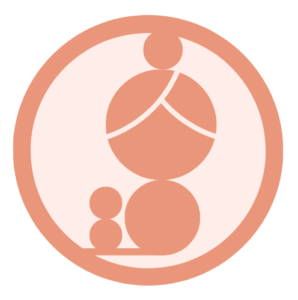
The better you understand how the brain works, the better you’ll understand yourself and your littles.
1st Need to Know: Our Brains have a “Stress Response System.”
… and it lives in our lower brains.
KEY TAKEAWAY: All difficulties (real or perceived) create a level of stress. Notable stress (strong or extensive) will trigger our lower brains into action. What do I mean by action? I mean your fight, flight, or freeze response, also known as “flipping your lid” (Detailed explanation HERE).
The more mature our upper brains are, the better they are at soothing our lower brains and preventing us from ‘flipping our lids.’
However, when you experience notable stress or a bunch or small stresses start to add up to notable stress, your brain begins to interpret this as a threat. As a result, your body quickly and automatically prepares you to respond (Specifically, you’ll experience increased heart rate, blood pressure, and stress hormones, such as cortisol).
This instinct is great when it comes to saving your life; but, the process is not perfect. Especially in our babies’ very undeveloped and immature brains.
Parenting Takeaway:
In the beginning, when your little’s lower brain takes over, they need help soothing it before they can regain access to their upper brains. As the upper brain matures (i.e., gets better at communicating with the lower brain) your littles will begin to develop the ability to “sooth” themselves (Self-Regulation). Eventually, resulting in fewer lower brain takeovers. Or in other words, the meltdowns will decrease, until adolescents 🙂
Here’s a small example of a natural maturation process – your little’s stress response to hunger cues.
- 0-3 months – Baby feels hungry, and with 0-5 minutes the lower brain immediately interrupts hunger sensation as a notable threat. As a result, the lower brain takes over, and the baby begins to panic cry to secure food.
- 4-6 months – Baby feels hungry, the lower brain is activated by the sensation. However, because the upper brain has started to learn that we are reliable in ensuring baby is fed, the upper brain soothes the lower brain by communicating, ‘it’s ok, we are safe, we will be fed.’ However, as hunger sensation grows, so does lower brains sense of threat and within 10-30 minutes the lower brain takes over to ensure hunger needs as met. Cue panic cry.
- 6-12 months – Baby feels hungry, lower brain is activated, upper brain soothes lower brain and starts to initiate learned attempts to communicate hunger. As the hunger sensation grows or attempts to communicate fail, the lower brains sense of threat will increase, and 15-60 minutes later lower brain flips to ensure hunger need is met.
- And so on…
Circling back, how does this relate to us?
Since bringing home baby, have there been times when you feel super emotional or on edge. Do you ever feel like it’s hard to think, remember things, or keep focused?
As an adult, we hopefully rarely experience moments in which our lower brains completely take over (Better understand what it feels like when our brains to fully “flip” HERE). However, the more stress our lower brains are under, the more mental energy our upper brains must use to prevent flip-age. The main two ways this effects us are:
- We struggle to function normally- The more upper mental energy used to sooth the lower brains, the less available for the other tasks. This is why when your sleep deprived (a basic need), and your lower brain is focused on all things baby, your upper brain has less energy available for previously simple tasks like memory, focus, or conversation.
- Little things feel like big things – With our lower and upper brains working overtime, we don’t have the mental energy to handle much more. For this reason, the smallest things may threaten to push us over the edge. Think of the term, ‘the straw that broke the camels back.’
Ok, cool insight, but how do I apply this?
In short, the answer again is awareness. Specifically, awareness around your (+ your little’s) stress threshold and triggers. Important note: It may take time, observation and experimentation to learn these. Try to have patience with yourself and your little.
- Threshold – Everyone’s stress threshold is different. The trick is identifying what yours is and what are the signs that you are reaching your limit (i.e., irritability, low energy, increased hunger, etc.)
- As a parent, learning your child’s threshold (+signs) is important in that it allows you to know best how and when to respond.
- Triggers – Certain things, emotions, or situations affect us stronger than others. Ones that create a strong reaction in us are termed triggers. Identifying your triggers allows you to understand and address your needs. This is helpful in high-stress situations (like motherhood) as your brain doesn’t have the mental energy to absorb or tolerate triggers it might have previously been able to cope with.
- As a parent, identifying your child’s triggers will again allow you to better understand, plan, and manage them. Our goal here is better understanding our children so we know how to respond to them. (i.e., Identifying that your little is triggered by loud environments, allows you to understand their reaction and plan accordingly. For example, limit time in noisy places, bring noise headphones, make sure she’s well rested).
Ok, so does that mean we need to avoid stress? Is stress bad for our little ones?
NO. Too much stress can overwhelm us, but the experience of stress is vital to our (+ our littles) growth and development.

